This is a schematic of the interior of Saturn.
Click on image for full size
An Overview of Saturn's Interior
The Giant planets do not have the same layered structure that the terrestrial planets do. Their evolution was quite different than that of the terrestrial planets, and they have less solid material.
Saturn's interior composition is primarily that of simple molecules such as hydrogen and helium, which are liquids under the high pressure environments found in the interiors of the outer planets, and not solids.
Motions in the interior of Saturn contribute in a very special way to the development of the powerful and extensive magnetosphere of Saturn. Heat generated within Saturn contributes to the unusual motions of the atmosphere.
You might also be interested in:
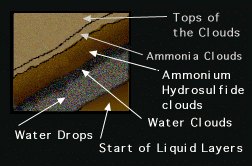
There is no surface to the giant planets, only a gradual change from the atmosphere, as shown in this drawing. The gases which Saturn is mostly made of change to liquid inside Saturn, but the change is
...more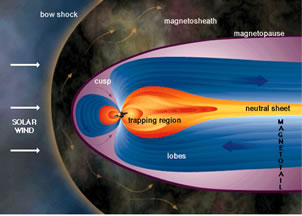
Saturn's magnetosphere is not as big as Jupiter's, but it is still pretty big. It is big enough to hold all of Saturn's moons. It is probably made the same way as is Jupiter's, which affects its overall
...more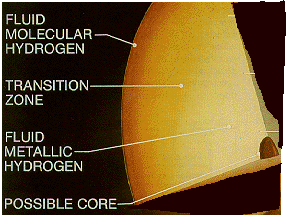
The first liquid layer inside Saturn, right under the atmosphere, is the liquid hydrogen layer. The hydrogen atmosphere becomes thicker and thicker, like a dense fog, with more and more liquid droplets,
...more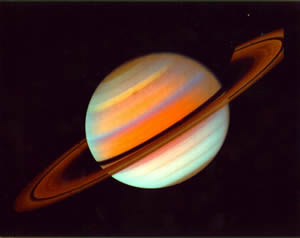
Like the inner planets and Jupiter, Saturn is clearly visible in the night sky. The ancient Greeks named the planet after the god of agriculture and time. It wasn't until 1655, however, that we knew Saturn
...more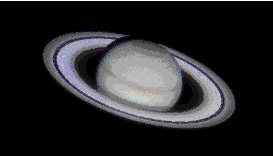
The dramatic appearance of Saturn stems mainly from the spectacular rings. The atmosphere looks much less dramatic. The clouds of Saturn are much less colorful than those of Jupiter. This is because the
...more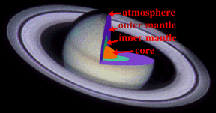
The Giant planets do not have the same layered structure that the terrestrial planets do. Their evolution was quite different than that of the terrestrial planets, and they have less solid material. Saturn's
...more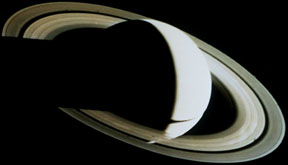
Many people like Saturn's rings. Although Saturn isn't the only planet with rings, it is the only planet famous for them. Almost every image or drawing of the planet has the rings included. But few people
...more














